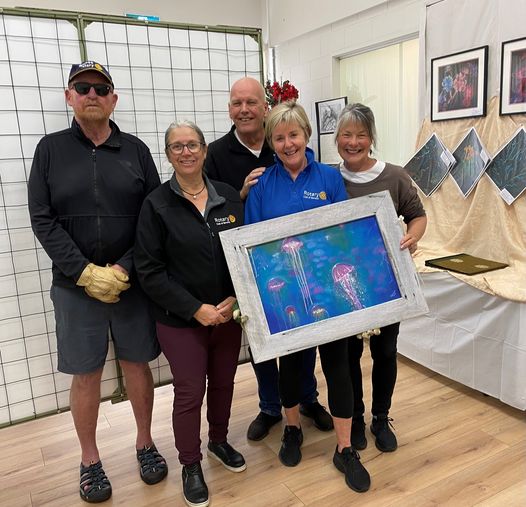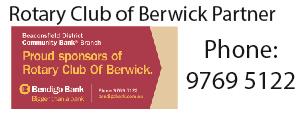
We all have stories; they’re what life is made of. Our childhoods, our families, our joys and sadnesses – we go through the years amassing material, which we craft into the ongoing personal narratives that make up our inner lives.
The dictionary definition is succinct: Narrative: A spoken or written account of connected events. A story. But the importance of storytelling is epic. Homer knew it. Cave dwellers knew it, even if they told their stories in pictures. Shakespeare knew it. Nomads telling tales around a fire knew it.
Today, even corporations know it. In October, United Airlines hired a chief storyteller. Microsoft, IBM, Verizon, SAP – they all have storytellers on staff.
Marketing people know it. The fields of marketing and publicity these days are thoroughly couched in terms of storytelling and narrative.
And Rotary has always known it. Thus the long-standing tradition of asking new members to give a “classification talk” – to tell a story to introduce themselves.
The urge to tell stories, and to hear them, is universal. But the ability to tell them comfortably and well? Not so universal. Especially when the story is our own: Even after years and many a personal essay as a columnist at the Chicago Tribune, I maintain a certain amount of apprehension when I write about myself. It is notoriously easy for a personal essay to turn sentimental or boring.
But it’s a hesitation worth overcoming, and a skill worth developing, especially if you want to encourage other people to join you in a pursuit you find enjoyable and meaningful.
Every Rotarian has a story. Why you joined, why you stay, how your involvement, your service, or your friends add to your life – it’s all there.
Why tell it? Because it gives outsiders like me a chance to learn about what Rotary means to you. Because you can raise funds more effectively if you tell a powerful story about why those funds matter. And because you can strengthen your bonds with other Rotarians and deepen your club’s sense of community by telling a story that touches you all.
Is your life richer because of Rotary? Has it enabled you to travel to someplace fascinating? Given you a window into a different side of your own town? Let you participate in a service project that changed someone’s world?
Those are the reasons you should tell your story. Here are a few tips on telling it well.
Decide on one story. You probably have many stories about your experiences in Rotary, but making a single point is more powerful than tossing out many.
How about this for a subject: the joys of welcoming visiting Rotarians into your home. Now pick one of those visitors and start by describing one scene.
Use action. In newspaper talk (and spelling), we call this an anecdotal lede. Here’s an imaginary possibility:
Jane dropped her suitcase, took off her shoes, and sank into our couch. “It was a long trip from Johannesburg,” she said. But before long, the distance between our homes had vanished; we were all Rotary members, and the conversation flowed freely.
When you start with Jane, you can explain why such visits from Rotarians are important; you can talk about other people from other places you’ve welcomed to your home; you can give a sense of the international nature of Rotary; and you can explain what having friends around the world has meant to you.
Speak for yourself. This is your story, so get personal. Think about your unique point of view. You don’t need any particular expertise; maybe it’s simply that you are brand new to Rotary. Tell what this story means to you; reveal something about yourself, especially if some element of your Rotary experience has challenged you in some way.
Find the conflict. Conflict makes a story more interesting. If there is no friction, if nothing changes and nothing is learned, where is the narrative’s energy? And what is the point you are trying to make?
The Moth, a nonprofit storytelling group that produces a podcast, a radio show, and live events, offers some tips: “Have some stakes. Stakes are essential in live storytelling. What do you stand to gain or lose? Why is what happens in the story important to you? If you can’t answer this, then think of a different story.”
Sound like yourself. Your story should be in your own voice. If you’re writing, write the way you talk. If you’re speaking, imagine that you’re conversing with a friend.
Consider the narrative arc. Think about your story as following a path that rises through a challenge or complication, reaches a turning point, then descends for a conclusion that provides some resolution. This can be as simple as telling how you were new in business in a new place, then were invited to join Rotary, and once there found a community. A simple and probably common story – but a story with a beginning, a middle, and an end.
Talk about people, not programs. No doubt your club runs some fine programs and service projects. But roll these words around: Program. Initiative. Project. Have your eyes glazed over yet?
I was working on a story for the Tribune about the Illinois Center for Rehabilitation and Education’s fine program teaching blind adults how to manage life without sight. But I didn’t write about the program; I wrote about Jim Juchcinski.
Juchcinski was a man who had lost his eyesight to diabetes, had descended into depression and isolation, and was trying to make his way back into the world. His goal: to walk down the street without help.
I wrote about that one man, that one goal, and that one moment when, after weeks of struggle learning how to use a white cane, he walked slowly down a street, tears of pride streaming down his face.
Of course, the story was also about the program, in detail. But it was Juchcinski who made you care; he was the one with the high stakes.
Show, don’t tell. It’s classic storytelling advice, and it works. Think of Jane, your fictional international visitor: Did she wake up at 3 a.m. every day during her visit? Talk about that; don’t just say she had jet lag. Did she invite you to Skype with her kids? That demonstrates how you were becoming friends. Do you find yourself checking airfares to Johannesburg? Isn’t that a more vivid way to say that now you’re thinking of visiting her?
Keep it simple. Short sentences are strong sentences.
End strong. In the newspaper world, we call the end the kicker, which gives a nice sense of the punch you should close with. One way to do that is by circling back to your story’s beginning.
And whatever you do with your narrative, don’t sell it short. Whether you are telling your personal story to your family, your company’s story to its customers, or your Rotary story to a prospective member, remember that it has power.
As we go through life, we never lose the anticipation and excitement embodied in these four words: Tell me a story.

